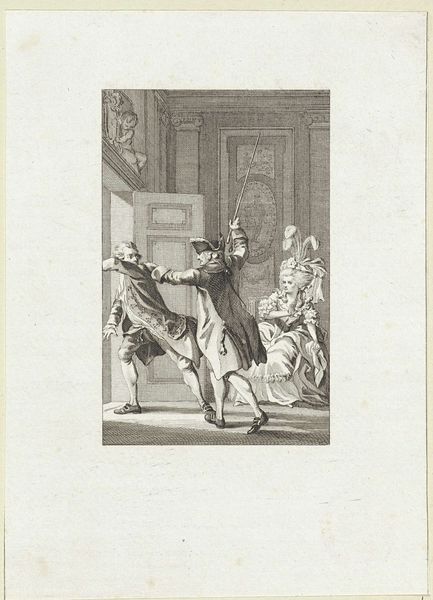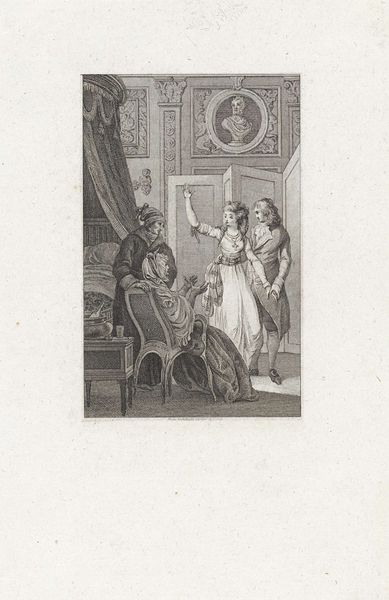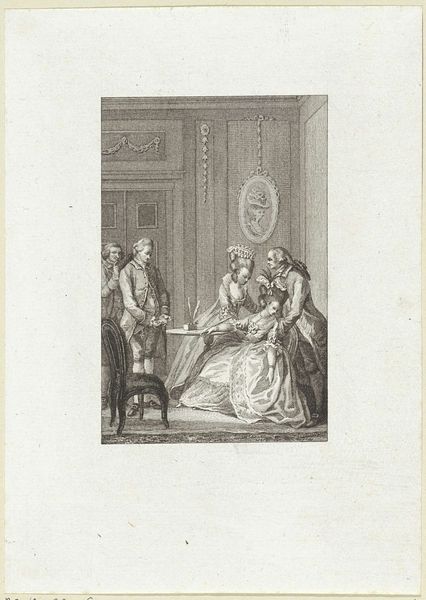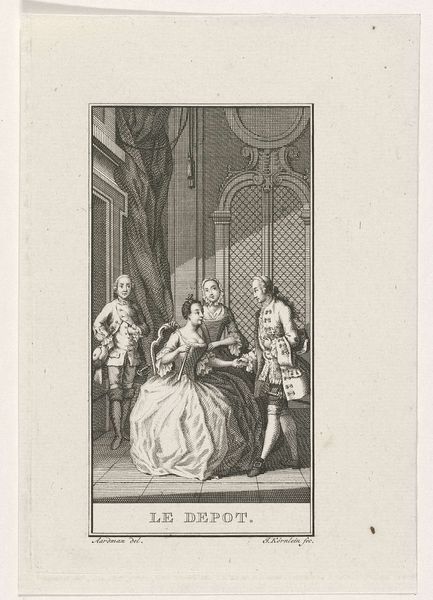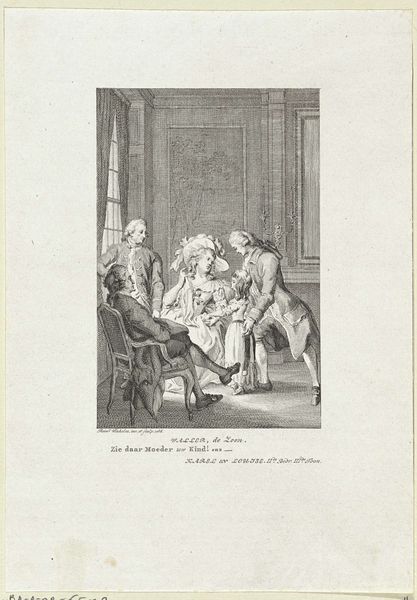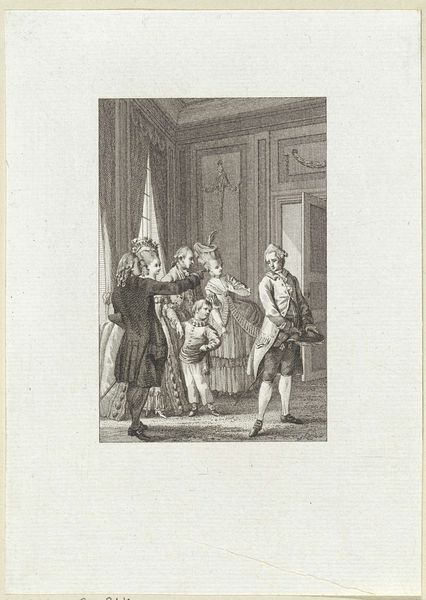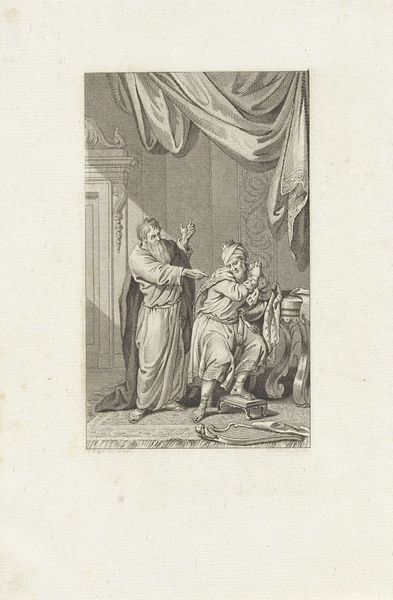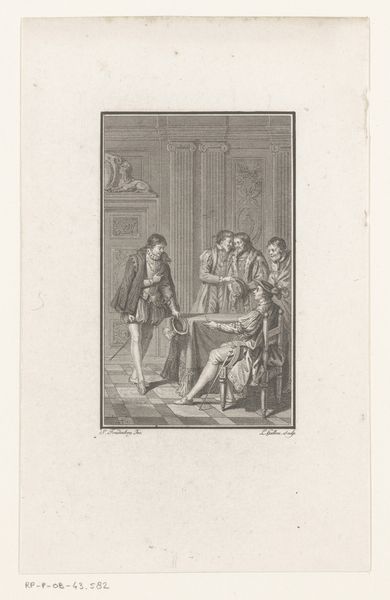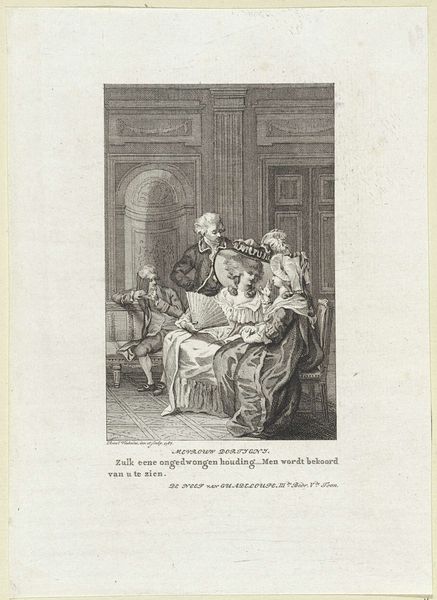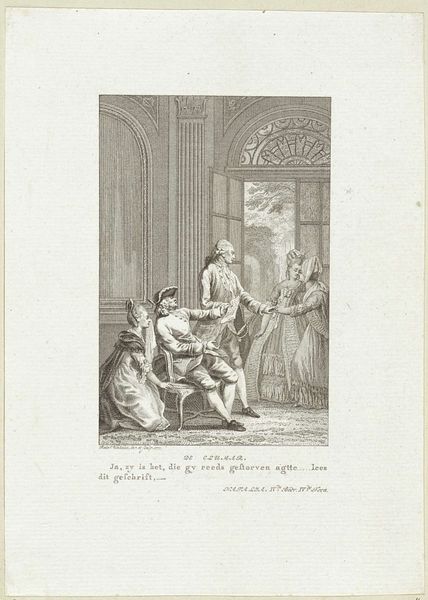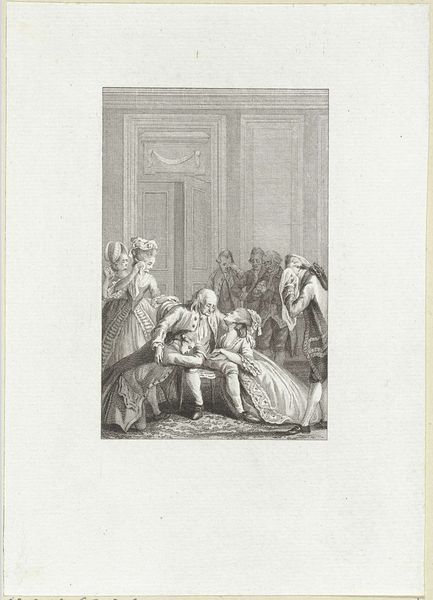
print, engraving
#
narrative-art
# print
#
old engraving style
#
figuration
#
classicism
#
line
#
genre-painting
#
history-painting
#
academic-art
#
engraving
Dimensions: height 209 mm, width 148 mm
Copyright: Rijks Museum: Open Domain
Curator: Reinier Vinkeles' 1786 engraving, "Heer daagt een ander uit voor een gevecht met de degen"—"A gentleman challenges another to a duel"—presents a scene thick with tension. Editor: Yes, and the first impression it gives me is of disruption and forced conflict in a confined space. The expressions are so pronounced, practically theatrical! Curator: Note how Vinkeles uses incredibly fine lines to delineate form, giving volume to the figures, particularly the billowing gowns, and rendering texture from the carpet to the neoclassical details of the room itself. It adheres to the established academic style, certainly. Editor: It makes me consider the social dynamics at play. Look at the woman caught in the middle, practically being used as a prop in this aggressive exchange of masculine power. The staging within this aristocratic interior is so deliberate. Were women's positions just relegated to accessories of wealth or lineage, used by men as their battle grounds? Curator: The artist's intent seems rooted more in narrative; conveying a morality tale, perhaps warning against hasty actions driven by pride. Observe how the receding architecture guides your eye back into space creating depth while still maintaining clarity among each figure. Each gesture, the challenge offered, the woman being restrained. There is formal brilliance here in representing the build up before physical conflict. Editor: But what is so "moral" here? What's moral is men grandstanding in front of each other while the person who gets caught in between has to bear their anger without her consent. The fact that this print has been produced is, at least, evidence of it becoming consumable, acceptable as art. Did people question such interactions during that time, or celebrate it? Did people recognize who loses in this scenario or glorify whoever “wins” through violence? Curator: The classical architectural details of the interior enhance the sense of decorum, even as that order is threatened. He achieves this with clarity of line and balance in composition; classicism strives toward rationality even in its tensions. Editor: Perhaps. But in that supposed rationality, who is really free? These kinds of interior scenes need to also be questioned, for what they omit and perpetuate. Thank you for calling my attention to this piece; it reveals the inherent problem of representation when power is left unexamined. Curator: A worthwhile conclusion! By closely inspecting the visual grammar itself, perhaps, it has afforded the means for reflecting on its broader implications and what it all means for our world now.
Comments
No comments
Be the first to comment and join the conversation on the ultimate creative platform.
